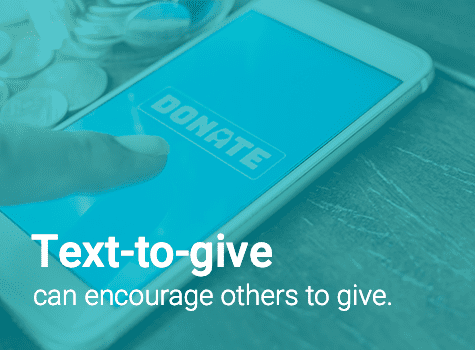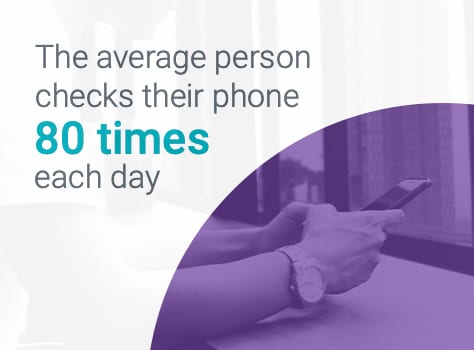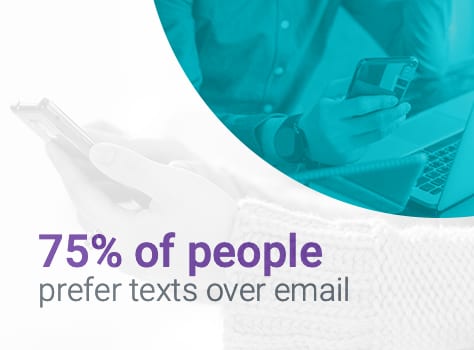Mar 17, 2020
Checklist: Pivoting to a Virtual Fundraising Event

Your event is no longer taking place in person…now what?
Short answer – breathe.
“When written in Chinese, the word ‘crisis’ is composed of two characters. One represents danger and the other represents opportunity.” – John F. Kennedy
Remember, opportunity still exists, but your original plan might not be the one to help get you there.
You, your organization, and your donors will get through this. During these unpredictable times, you and your team will face challenges, new situations, and tricky obstacles. You will, however, emerge stronger and more resilient than before. Additionally, there will be lessons picked up along the way that will help grow your mission that may not have surfaced otherwise.
Here’s where to begin when pivoting to a virtual fundraising event or campaign:
Breathe (in case you forgot).
In this checklist:
- Your options moving forward
- What does pivoting to an online auction or virtual event look like?
- Communicating your decision
- Assessing: How much fundraising money is at risk?
- How to engage with your community
- Closing the gaps between your in-person and virtual event
- Additional Resources
- GiveSmart Client Resources
 Decide.
Decide.
There are four options to choose from: go virtual, cancel, postpone, or reschedule. There are many decisions that need to be made in moments of crisis, but as it pertains to your fundraising event(s) we’ve boiled it down to the primary alternatives we’ve seen from the market:
- Go Virtual –If for any reason you’re unable to hold your physical event (gala, golf tournament, luncheon, etc.) you can still proceed with a virtual fundraising event. Leveraging the power of online fundraising, while adding some creative social media and technology options such as live streaming, you can bring the excitement of your event to your donors’ computers, phones, and tablets.
- Cancel – Forgo the physical event entirely due to a combination of factors (logistics, timing, health concerns, etc.). Forgoing the physical event does not mean you need to forgo all the fundraising revenue that is still possible from your donors.
- Postpone – The intent is for the event to take place at a future date/time, but as of yet that date/time hasn’t been finalized. Given the current state of things, donors understand that a postponement may eventually result in a true cancellation, but you can keep those lines of communication open.
- Reschedule – A new date has been established with a set venue and you’re ready to move all efforts towards that new date. A key thing to consider is whether your newly rescheduled date runs the risk of competing with/overtaking any other fundraising initiative(s) that you may have already allotted for that.
 What does pivoting to an online auction or virtual fundraising event look like?
What does pivoting to an online auction or virtual fundraising event look like?
Repurpose ticket purchases as donations
If John Doe bought a ticket to your event for $100 and has already paid, you can move that purchase to a $100 donation. As mentioned above, this is a mutually beneficial option that allows your donor to count this as a true donation and your organization to keep the fundraising revenue.
Silent Auction
You can release all or some of the auction items you were planning on having at your physical event to be available for mobile bidding. You can still send out text messages promoting the items, close times, etc. Just as if a physical event were taking place. By requiring a credit card for bidding, you also ensure you’ll have a payment method available for all winners. It’s easy to set up, promote, track, and close an online auction and you’ll have plenty of post-event data to analyze for your next fundraising campaign(s). We also recommend providing instructions for “what happens next” after they’ve won an item. This may include whether an item is eligible for shipping or pick-up hours and locations will be. Luckily, you’ll have all their contact information saved for easy communication on a one-to-one basis as well.
Live Auction
Live auction items are usually your most high-profile, high-priced items that generate buzz within a room. However, that same excitement can be replicated online. You can choose to move these items into Silent Auction items with starting bid prices that match where you would have started the bidding. They can be put into a “Premium” category to make them stand out from other items. If that’s not your preferred route, you can set up a Live Stream and have people call in with bids — or, use something like Facebook Live and have donors comment from within the stream itself. Bonus: If you know who won similar items from previous events, you can also contact those donors directly as they’ve obviously shown an interest before.
Donations
Of all the fundraising elements to move online, we know this is the one that creates the largest concern, understandably so! However, there are online-based donation options to help mitigate those concerns. Once registered in a campaign, donors can enter in contributions via text messages. Donors can select an amount from pre-established levels you may have set up, or freely enter any donation amount right from the same campaign you’re using for your auction or event.
Donor matching
If you have a donor that usually raises their paddle for a large amount, consider asking them to match all donations made online up to that same amount. This can help encourage others to give, especially if you name the matching donor.
Monthly recurring giving
In addition to a one-time donation, you can provide your donors with the option to make it a recurring monthly contribution. This allows them to support the organization beyond just a given event and, of course, helps drive revenue for your organization.
“Where does the money go?”
One of the things that a physical event usually has is a speaker or video that shows the great work of your organization. Don’t lose that element when going virtual! Whether it’s showcasing where the funds will go, specifying that “your $250 donation funds ___ for a year”, or links to success stories from your organization, providing a direct line from the donors’ contribution to your organization success goes a long way.
Additional Fundraising
Given the nuances of each fundraising activity or game that exist, certain games (heads/tails) might not be able to be replicated online. However, there are plenty that can be. Think about games you had planned and how they can be adapted, or, brainstorm new games altogether. Creativity goes a long way!
Pass on Fees
When choosing to accept credit card payments, there is a fee per transaction charged to the organization. You can choose to either require donors to cover that fee, or to make it optional when they’re satisfying their balance in checkout. This gives the donor the option to cover the fees and when doing so, providing more revenue to your organization.
Mobile Sponsorships
If you didn’t already have a sponsor to cover the costs of an online platform, this is a great time to obtain one! You can feature them on the site in a myriad of ways and help create a sustainable revenue stream for future fundraising campaigns
 Communicate your decision.
Communicate your decision.
Internal Communications Plan
Ensure that all internal parties, from your board to your employees, are FIRST made aware of the unified message that has been established. Don’t forget your volunteers. They’re often overlooked, but these individuals are true supporters of your cause(s), and as such, should be included within your internal comms plan to help foster a team-first mentality.
External Communications Plan
Once you’ve solidified internal messaging, you’ll want to start communicating with your donors to provide them a status update. Depending on the size of your event and resources, you can choose either a one-to-many approach (see below) or a one-to-one approach (contacting each donor individually). Either way, letting these donors know how much their support means and will continue to mean is something that should be prominent in the communication.
 Assess: How much fundraising money is at risk?
Assess: How much fundraising money is at risk?
Sponsorships
Given that so many of these events aren’t possible without the support of sponsors, you want to ensure they are amongst the first donors you’re in contact with. Depending on the sponsor level, if you’re between two potential dates for a rescheduled event, you can involve them in your decision–making process to fortify that partnership going forward. Regardless of the modification to your event, there is nothing stopping you from promoting your sponsors and thanking them through social media or other channels. Usually, it is at the physical event where a good amount of recognition comes into play, but that same level of gratitude is easy to replicate online (live stream, anyone?).
Ticket Sales
If you’re postponing and/or rescheduling, you can inform donors their ticket purchase will be good for the future date. However, if you’re canceling the event, or a donor cannot attend the future date, consider asking them if they’d like to convert their ticket purchase into a donation. This not only has a tax deduction benefit for them but also helps ensure your organization can retain some of the revenue associated with that purchase.
Auction Items
The FIRST thing you need to do is identify any item(s) that are time-sensitive. For example, if you have a gift certificate that expires June 1st, 2020 and you’re not rescheduling until October, you’ll need to prioritize maximizing the fundraising revenue for that item right away.
Second, you need to determine if items can be deferred to coincide with the theme of any future event(s) you may have or if they should be put to auction now. For example, if your spring event is an art auction and your fall event is a casino night, it might serve you best to auction off any art in an online auction/virtual event.
Finally, if you have any tickets to an event that may be impacted by closures (I.e. tickets to a Chicago Bulls game, but the NBA is on hiatus), we recommend getting in contact with the individual/organization that donated the tickets to see if the tickets can be used for a future date. You can enhance the donor experience by taking care of these details for them to ensure when they win the package, they’re all set.
Once you’ve analyzed those areas, you may find that your auction represents an area of incredible fundraising potential. The convenience, simplicity, and availability of online auction software gives you an opportunity to host your auction. These items can still generate valuable fundraising revenue and give you a way to engage your donors if a physical event isn’t taking place. It can also to keep them engaged leading up to a rescheduled event date.
Read: Ultimate Silent Auction Study
Additional Fundraising Components
We know events have many layers of fundraising planned, whether it’s an opportunity drawing/raffle, sign-up parties, or a wine pull. Taking stock of “what’s on hand” and whether or there is a time dependency (sign-up party) associated with a particular offering is the best first step. From there, you can determine what item(s) should be rilled over for a future event versus what would be good to include in an online auction/virtual event. As always, we recommend you consult with your legal advisor on specific raffle regulations governing your state or organization type before proceeding with any virtual raffle sales.
Future Opportunities
For many of you, repeat donors are a major objective, and event A is where you inform them about Event B. Whether that’s a fundraising event, a volunteer day, or any other opportunity, don’t lose sight of “what’s next.” Communicate those opportunities to your donors. Everyone loves having something on their social calendar, and the earlier you can get on there, the better your objectives and outcomes will be.
 Know your engagement options.
Know your engagement options.
Social (Facebook, Instagram, LinkedIn, Twitter)
Given the speed and scope of social media, use all social channels at your disposal to mass communicate messages, especially ongoing ones. Most of these platforms offer live stream video for free, which is a great appointment viewing for your donors. People spend up to nine hours per day on their phones and the average person checks their phone 80x each day…use that to your advantage!
Email
While usually a helpful medium, in moments of crisis, every company you’ve ever done business with comes out of the woodwork to provide you an update as to how they’re handling the current situation. We don’t say that to deter anyone from leveraging email, but rather to help set an expectation that email click-through-rates may be lower than usual. If you have a designated list of ticket purchasers/event registrants specific for your event, it is imperative that they receive notifications and are directed to your other channels for ongoing developments. By targeting communications to those most invested in your organization, you will keep them engaged and position them to take action.
Text
75% of people prefer to receive a text message over an email, and 98% of text messages are opened. Reach the donors where they already are for both updates to the status of your event(s), but also other ways they can participate and support your organization.
Live stream
Whether it’s through Facebook Live, YouTube, Vimeo, or our sister company under Momentive Software, Churchstreaming.tv, there’s no shortage of options when it comes to live-streamed communications. You can leverage this option for any number of communications, including: sponsor showcasing, raffle drawings, auction item reveals, or day-to-day updates of what’s happening at your organization. The easiest way to facilitate the use of live streaming is to incorporate into a platform your less tech-savvy donors may use. Including a link in either text or email, having the stream visible on your website, or sending a link directly to your Facebook/YouTube page is a great way to ensure donors are able to access this content.
Event Site
Your campaign page is where you’re trying to drive traffic so it shouldn’t be overlooked when you’re thinking of engagement. If you’ve spent so much time getting them here, make sure they don’t have a reason to leave! Explaining how the auction will work, including how to bid videos, or other key communication pieces are great to include here. As well, this is a great place to generate interest in future initiatives your organization has planned.
 Consider your gaps.
Consider your gaps.
Is there a gap between your physical event (gala) target and what you think you can accomplish via a virtual event? If yes, consider all-year-round engagement options to generate interest and revenue beyond just a gala or golf event. We’ve found that donors are willing to give 4-10 times a year, so your audience is captive. Here are a few examples to consider:
- Quarterly: smaller ‘boutique auctions’, fun runs/5k, junior board events, or other smaller events to either attract new donors or raise funds (or both ).
- Monthly: recurring donations, newsletter, repeated ways to get engaged.
The days of mailing in a check are long gone; you should ensure that the medium(s) you’re using to capture fundraising dollars and solicit donations matches your donors’ preferences and meets them halfway to streamline the giving process.
Looking to pivot to an online virtual event? We’ve got you covered.
Related Resources:
Webinar: Pivoting to a virtual event
Creative Campaigns
Ultimate Silent Auction Study
Essential steps to a text-to-donate campaign
6 tips for texting your donors
Already a GiveSmart client? Login to the Help Desk for additional resources:
Help Desk
Related

 Decide.
Decide.
 What does
What does 


 Communicate your decision.
Communicate your decision.
 Assess:
Assess: 
 Know your engagement options.
Know your engagement options.

 Consider your gaps.
Consider your gaps.


